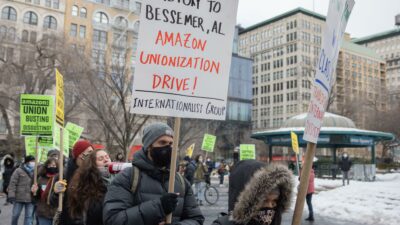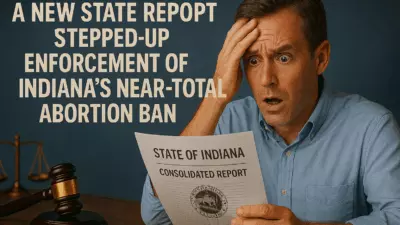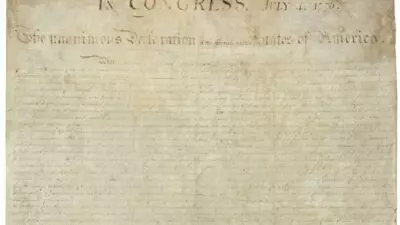In March, Amazon scrapped plans to build a new distribution center at an abandoned campus of Westinghouse Electric Corporation in Churchill, located east of Pittsburgh. At 3 million square feet, the proposed facility would have been the largest of the rapidly increasing number of Amazon sites in southwestern Pennsylvania and one of the largest in the Rust Belt.

The about-face represented a surprise victory for the hundreds of Churchill residents who spent months knocking on doors to circulate petitions in protest of the plan because they were concerned about the environmental, health, and traffic effects.
But in the statement announcing the Churchill reversal, the company affirmed its sustained desire for “a great relationship with the region.” Allegheny County Executive Rich Fitzgerald applauded designs for Amazon plants at four other nearby locations.
In other words, while Amazon may have lost the battle of Churchill, the war rages on.
It’s tempting to characterize the meteoric rise of Amazon and its fellow tech behemoths as unprecedented. But for Postindustrial America, it’s a familiar tale. Southwestern Pennsylvania once was the cradle of the American steel industry. It was in my native Pittsburgh and its vicinity that Andrew Carnegie established his empire in the late 19th century.
Starting in 1875 with Edgar Thomson Steel Works in Braddock, Carnegie bought up mill after mill.
His crown jewel was in Homestead, just five miles from Churchill. The Homestead Works was among the world’s largest steel mills, leveraging new technologies such as the open-hearth furnace and the pumphouse to make Carnegie Steel one of the most profitable monopolies of the Gilded Age.
But it was not just efficient machinery that generated the corporation’s immense wealth. Carnegie pioneered the strategy of vertical integration, purchasing iron mines and railroads to lower production costs and ensure captive markets. Moreover, he repeatedly slashed the wages of workers, who toiled for long hours under grueling conditions.
On June 29, 1892, Carnegie’s manager, Henry Clay Frick, informed Homestead’s employees that the company no longer would recognize their union, the Amalgamated Association of Iron and Steel Workers.
When the Homestead community responded by organizing a strike, Carnegie hired 300 armed Pinkerton guards to crush the uprising, and in the ensuing battle, seven workers and three Pinkerton agents were killed.
On July 12, the Pennsylvania National Guard forcibly reopened the plant using replacement laborers. By November, the strike had collapsed, its leaders charged with treason.
In the aftermath, the Amalgamated Association’s standing crumbled as bosses engaged in widespread union-busting, leaving steelworkers unorganized for decades to come.
In 1901, Carnegie Steel became U.S. Steel, the world’s first billion-dollar company, making its namesake the richest man in the world.
The Homestead Works closed in 1986 during the wave of deindustrialization. Last summer, I rode my bike to the defunct pumphouse, where I discovered a plaque featuring an “Address to the Public” from the Homestead strikers:
“The most evident characteristic of our time and country is the phenomenon of industrial centralization, which is putting the control of each of our great national industries into the hands of one or a few men and giving these men an enormous and despotic power over the lives and the fortunes of their employees and subordinates — the great mass of the people.”
Those words echo today.
Whatever community ultimately serves as host to Amazon’s new stronghold, it will join dozens of others in and around Pittsburgh, Detroit, Akron, Ohio, and Indianapolis whose economies, infrastructures, and social scenes will be shaped by the vaunted fulfillment center.
Amazon founder Jeff Bezos understands the power of vertical integration: What began as a platform for e-commerce now offers proprietary versions of basic products.
As with Carnegie Steel, Amazon’s profits are tied to workers’ efforts.
Before it rusted, Northeastern and Midwestern America provided the sites of capital accumulation for the industrialists of yore.
Now, it welcomes new titans of industry. The question becomes whether anything will change this time.
Beginning in the 1930s, unions rebounded, while the government responded to voter demands by regulating big business and establishing labor and environmental protections.
“People power” countered corporate giants. Today, from Churchill to Bessemer, workers and residents are organizing to stand up to the barons of the Postindustrial Age.
The welfare of their communities may depend on their success.







